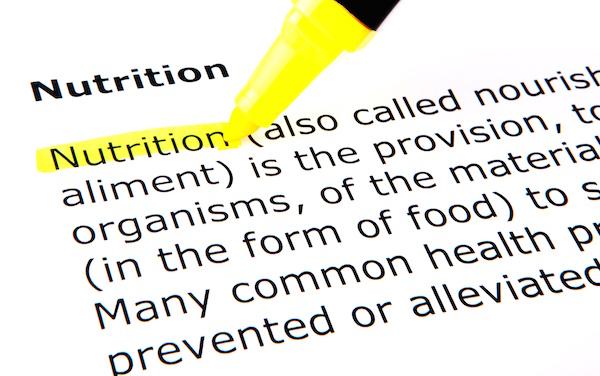
FRIDAY, Nov. 18 (HealthDay News) — Those in the know consider fruits and vegetables among the healthiest foods around.
U.S. government health experts now encourage Americans to fill half their plates with fruits and vegetables. Weight Watchers’ new system assigns no points to nearly all fruits and vegetables, making them a truly “guilt-free” option.
But, really, what’s the big deal? Why is it so important to eat more veggies?
Nutritionists can rattle off a long list of reasons when asked that question. Vegetables and fruits are dense in nutrients but light on calories. They contain rich amounts of vitamins, minerals, antioxidants and fiber. Eating more veggies and fruits has been linked to decreased risk for such health problems as diabetes, heart disease, high blood pressure and cancer.
Despite this, many people seem to have a hard time eating vegetables, something that’s developed the reputation of being a chore rather than a pleasure. President Barack Obama even likened the need to finish difficult debt ceiling negotiations to the need to “eat our peas.”
More than nine of 10 Americans consume fewer fruits and vegetables than the daily amount recommended by the U.S. Department of Agriculture’s dietary guidelines, which ranges from 2 cups to 6½ cups, according to the “Fruits and Veggies — More Matters” health initiative, a national program aimed at increasing consumption of plant-based foods.
“I would say many of my current clients get maybe a cup of vegetables and maybe a fruit throughout the day, if I’m being generous,” said Jessica Crandall, a registered dietitian and certified diabetes educator in Denver and a spokeswoman for the American Dietetic Association.
Getting a serving of vegetables or fruit is not difficult because a single serving is not a large amount, said Angela Ginn, a nutrition education coordinator and diabetes educator at the University of Maryland Center for Diabetes and Endocrinology at Maryland General Hospital, who’s also a spokeswoman for the American Dietetic Association.
“A whole cup raw or a half-cup cooked is considered a serving for vegetables,” Ginn said.
But there’s a lot of nutritional power packed into that cup or half-cup. Though the precise benefit varies by type of fruit or vegetable, it could include a significant amount of:
- Calcium, which promotes healthy bones and teeth, and is needed for proper functioning of muscles and nerves.
- Folate, which reduces a woman’s chances of having a child with a birth defect.
- Iron, which is necessary for healthy blood and cell function.
- Magnesium, which prevents muscle cramping and high blood pressure and is needed for healthy bones and proper enzymatic function.
- Potassium, which helps maintain healthy blood pressure.
- Vitamin A, which keeps eyes and skin healthy and helps protect the body against infection.
- Vitamin C, which aids in healing cuts or wounds and helps keep teeth and gums healthy.
Even the micronutrients that give fruits and vegetables their color are important sources of antioxidants, which have been shown to help prevent an array of diseases.
“Your phytonutrients that have all those vibrant colors, those are things that fight against chronic diseases,” Ginn said. “You find them in your fruits and vegetables more in abundance than you will in whole grains or in meat or dairy products.”
According to Crandall:
- Blue and purple fruits and vegetables contain anthocyanins, which have been shown to help fight some cancers and are helpful in anti-aging and memory function. They are found in blueberries, blackberries, plums, grapes, figs and raisins.
- Green fruits and vegetables contain luteins, which lower cancer risk and help promote better vision and strong bones and teeth. They are found in avocados, kiwi fruit, pears and apples.
- Red fruits and vegetables contain anthocyanins and lycopene, which can help keep the heart healthy, maintain better memory function and lower the risk for some cancers.
Fruits and vegetables also contain a large amount of fiber. Fiber has a number of health benefits and also helps make people feel more full, reducing their consumption of other higher-calorie foods, Crandall said.
“Most people think fiber is just good for digestion,” she said, “but it’s also helpful for lowering cholesterol, keeping your blood sugars stable and helping you feel full throughout your day.”
But even those who are already sold on eating more fruits and veggies sometimes find it tricky to work sufficient amounts into their day-to-day eating, say both Crandall and Ginn. They suggest getting creative.
For instance, work veggies into recipes that don’t normally contain them. “It’s just the little things you can do, even if you add grated carrot to your favorite muffin or grated zucchini to your pancakes,” Ginn said. “You can sneak them into your food in ways where you don’t even taste them, but you receive the nutritional benefit.”
They also suggest cutting up fruits and veggies so they’re bite-sized and available for snacking. As Crandall said, “Make a vegetable tray so they are easier to use, so you don’t have a cucumber rotting in the back of the fridge.”
And don’t worry about whether you’re eating fresh, frozen or canned vegetables. They’re all good for you. Fresh or frozen vegetables might have slightly more nutrients, Ginn and Crandall said, but canned veggies are cheaper and available throughout the year. Just be sure to rinse canned veggies, to reduce the amount of sodium they contain, or buy low-sodium alternatives.
More information
The U.S. Centers for Disease Control and Prevention has more on working fruits and vegetables into your diet, including interactive tools, tips and recipes.
For ideas on how to solve the dilemma of consuming enough vegetables, read about one woman’s story.

